A Good Nights Sleep
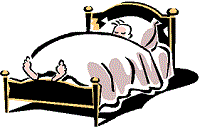 The following article is a small excerpt from one of my books. I hope you’ll want to learn more and let me help you to get into the best shape of your life.
The following article is a small excerpt from one of my books. I hope you’ll want to learn more and let me help you to get into the best shape of your life.
Everyone needs sleep. In fact a good nights sleep can be an athletes secret weapon. Without enough quality sleep, everything suffers; your mood, concentration, training and overall enjoyment of life.
After the common cold, sleep disorders may be the most common health complaint. There are over 50 sleep disorders, some of which include; nightmares, sleep terrors, sleep walking, sleep eating, sleep paralysis, sleep apnea and other breathing disorders. It is estimated that more than 70 million North Americans suffer or experience some of these problems and often experience daytime sleepiness, fatigue, headaches, reduced concentration and impaired memory. Most of these people are unaware of the type or severity of their disorder (or that they suffer from a sleep disorder) and how much it can affect their lives. While some people can live on four hours of sleep a night, others need upwards of eight to ten hours of sleep per day to function normally.
So what is sleep? Sleep has five stages, each of which can be characterized by different appearances of brain waves, eye movements and muscle activity. These stages are 1..2..3..4..and REM for Rapid Eye Movement.
Stage one is basically just drowsiness. Stage two is known as spindle sleep, because of the way the brain waves appear on the electroencephalogram (EEG). Stage three and four are often grouped together and called slow wave sleep because the EEG activity slows down, suggesting that during these two stages is where you get your most peaceful sleep. It’s also during these two stages that your body secretes Growth Hormone, and is often thought of as the most important stages especially when it comes to rest and restoration. Stage four usually ends when you shift your posture during sleep.
REM sleep is a unique state characterized by essentially no muscle tone at all. Your blood pressure, cardiac output, heart rate and respiration become heightened and irregular. It is here in REM sleep that you dream, and your brain waves during REM sleep closely resemble your awake state.
During a normal night sleep you will cycle from stages one to REM, with each cycle lasting about 90 minutes. This cycle will repeat itself about four to six times a night.
The disruptions of REM sleep can often leave you feeling groggy, so if you like to nap you should try to wake up 30 or 40 minutes into your nap and stop yourself from entering the REM stage of sleep. You could however nap for an hour and a half but this could disrupt your normal night time sleeping pattern.
So how much sleep do you actually need? Well for starters, sleeping patterns vary greatly with age. A newborn spends two-thirds of their time sleeping with half of that time in REM sleep. From the age of two on, approximately only 10-20 percent of your sleep time is spent in REM sleep. Elderly people tend to fall asleep earlier and wake up earlier.
Sleep requirements not only change with age but also with the amount of stress in your life.
Researchers say that only 10 percent of the population needs less than eight hours of sleep a night, yet the average adult receives only between seven and eight hours of sleep a night. This sleep deprivation results in increased daytime sleepiness and that leads to impaired performance. In fact, lack of sleep can be attributed to more than 200,000 vehicle accidents per year. Also a recent study suggests that the change to daylight-saving time (losing just one hour of sleep) results in increased traffic accidents.
Partial sleep deprivation has been proven to cause a decrease in maximum weightlifting performance, yet there is no noticeable difference in the performance of endurance athletes.
High levels of physical fitness, as well as saunas, steam baths, jacuzzis, hot tubs and tanning beds, can increase the amount of slow wave sleep. (stages three and four)
Sleep habits and requirements vary from person to person. Also, the consumption of some foods and caffeinated beverages too close to your sleep time may effect to quality of your sleep.
If you find yourself becoming fatigued, stressed or even having difficulty sleeping, you should try to keep a sleep log. In this log, write down any changes in your sleep quality and quantity. With this log also write down any lifestyle change that you’ve made and think that may have some effect on your sleep. Perhaps your eating a certain food orcaffeinated beverage too close to sleep or perhaps you’re just simply working out too close to bed time and need to adjust your workout schedule. With this log you will quickly get to the source of your sleeping problems and return to a peaceful sleep. However if your sleep problems persist and you can’t reach any conclusions you should consult your family doctor.
I know you want to get in shape and look great. Whatever your fitness goal…to slim down…gain muscle…tone your arms or flatten your tummy…I’m here to help you accomplish your goals and to improve your fitness level. If you have enjoyed this article and the many other free features on my site, and would like some more comprehensive information such as fitness books and CD’s to aid you in achieving your health and fitness goals, please visit my ONLINE STORE where you will find innovative natural health and beauty products to help you become the BEST YOU CAN BE !


 The following article is a small excerpt from one of my books. I hope you’ll want to learn more and let me help you to get into the best shape of your life.
The following article is a small excerpt from one of my books. I hope you’ll want to learn more and let me help you to get into the best shape of your life.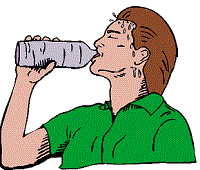 The following article is a small excerpt from one of my books. I hope you’ll want to learn more and let me help you to get into the best shape of your life.
The following article is a small excerpt from one of my books. I hope you’ll want to learn more and let me help you to get into the best shape of your life.
 The following article is a small excerpt from one of my books. I hope you’ll want to learn more and let me help you to get into the best shape of your life.
The following article is a small excerpt from one of my books. I hope you’ll want to learn more and let me help you to get into the best shape of your life.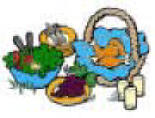 The following article is a small excerpt from one of my books. I hope you’ll want to learn more and let me help you to get into the best shape of your life.
The following article is a small excerpt from one of my books. I hope you’ll want to learn more and let me help you to get into the best shape of your life.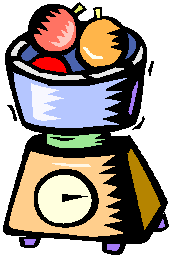 The following article is a small excerpt from one of my books. I hope you’ll want to learn more and let me help you to get into the best shape of your life.
The following article is a small excerpt from one of my books. I hope you’ll want to learn more and let me help you to get into the best shape of your life.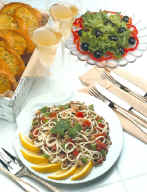 The following article is a small excerpt from one of my books. I hope you’ll want to learn more and let me help you to get into the best shape of your life.
The following article is a small excerpt from one of my books. I hope you’ll want to learn more and let me help you to get into the best shape of your life.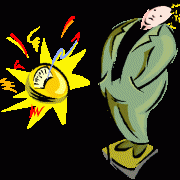 The following article is a small excerpt from one of my books. I hope you’ll want to learn more and let me help you to get into the best shape of your life.
The following article is a small excerpt from one of my books. I hope you’ll want to learn more and let me help you to get into the best shape of your life.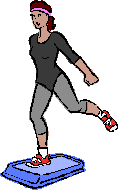 The following article is a small excerpt from one of my books. I hope you’ll want to learn more and let me help you to get into the best shape of your life.
The following article is a small excerpt from one of my books. I hope you’ll want to learn more and let me help you to get into the best shape of your life. The following article is a small excerpt from one of my books. I hope you’ll want to learn more and let me help you to get into the best shape of your life.
The following article is a small excerpt from one of my books. I hope you’ll want to learn more and let me help you to get into the best shape of your life.